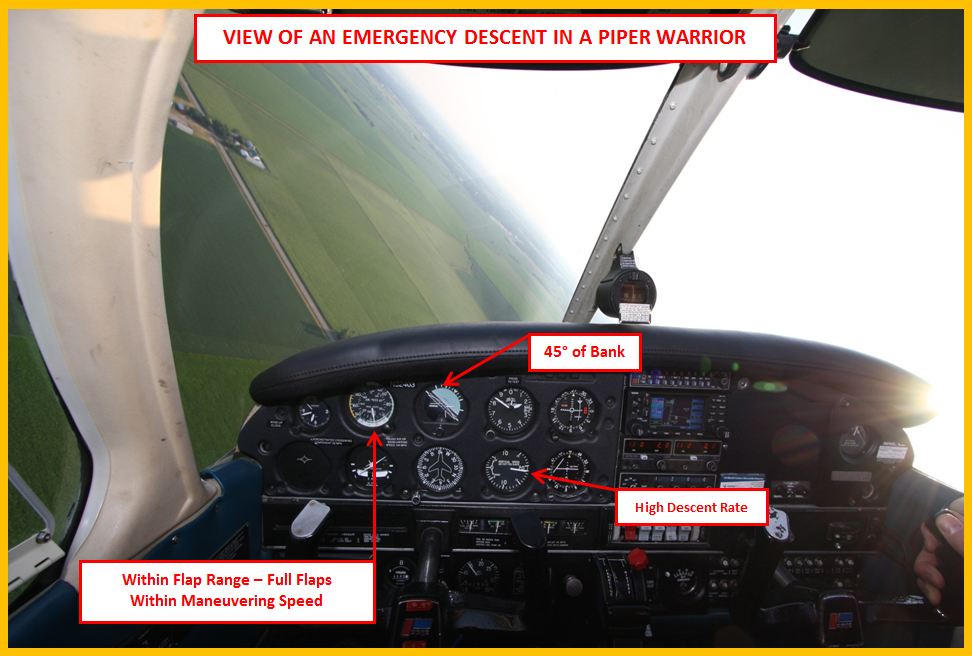Today I heard of an accident near my home airport. There was a guy that contacted approach control and said that his plane was on fire and that he was going to try to make it to the airport. The airport was from what I understand was 8 miles away. He was going to try to fly 8 miles while on fire! He didn’t make it.
If you’re ever on fire, get down NOW and put the plane on the ground as quckly as possible! The PTS requires that a pilot demonstrate an emergency descent, which would have been this guys best option. It used to be that just commercial pilots had to demonstrate these but as of recently, you have to do it as a private too.
As you know, when you have an engine failure, you pitch and hold best glide speed while looking for a field. You are usually in the air for quite awhile and have a lot of time to figure things out. The difference between a normal engine failure landing setup and an emergency descent is that the emergency descent requires immediate reaction and a descent as fast as possible. A perfect example would be if your plane was on fire.
If your plane is burning, you have very limited time to get down. In a matter of 5 minutes, you’re whole plane could be engulfed in flames. There’s no time for best glide speed or choosing the perfect field. The first thing you need to do is cut off the fuel. Yes, that means you will be shutting off your engine. The alternative is to continue pumping fuel into the fire. Now to get down quickly, you don’t want to just push the nose forward because you will build up excess airspeed which will be hard to bleed off when trying to land.
The way that works the best is to put in full flaps (as long as you’re in the flap operating range) and start a descending turn using 45° of bank. You want to pitch forward enough to keep it in the white arc. Keep the speed near the top of the white arc but not quite on the edge of it. This should give you around a 2000′ per minute descent rate (in a Warrior), just keep pitching to hold the best descent rate within the capability of the plane you fly while keeping it in the white arc.
While you are turning, look at the fields directly around and below you and plan your roll out as you get close. Your control inputs should be gentle so that you don’t have any sudden movements which could damage the plane. By the time you roll out and pitch back up to a more normal attitude for landing, the slower descent airspeed, plus the drag of the flaps will slow you down quickly to a normal landing speed.
On your way down you should definately turn off the heater or any vents that are open between you and the engine compartment to slow or stop the fire or smoke from entering the cabin. Flying the plane is always number one, but if time and altitude permit, grab the checklist to be sure you’ve done everything you can. Again, this is only if you have the time. Concentrating on getting the plane down safely and getting out as fast as possible is the real goal.
Never try to make an airport that is far away while on fire. It’s not worth your life. Fire can heat metal to a melting point. Even if it never gets to its melting point, it will weaken it. Strucural failure could happen before you make it to the ground, so don’t mess around with it. Once it makes it to the cabin, now you have to worry whether you are going to make it. If you’ve never done an emergency descent, get with an instructor and learn it, because it could save your life one day!

